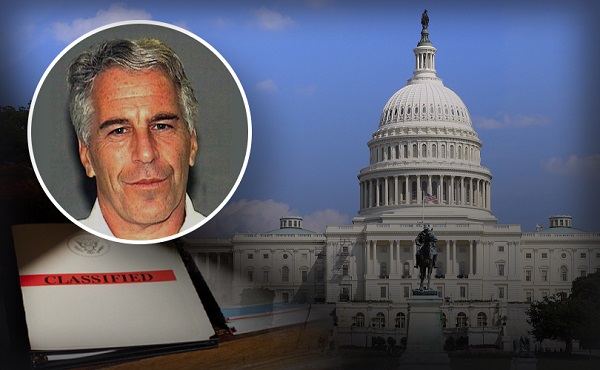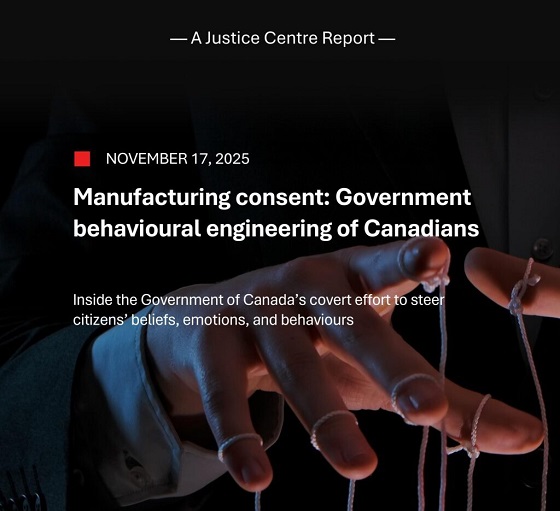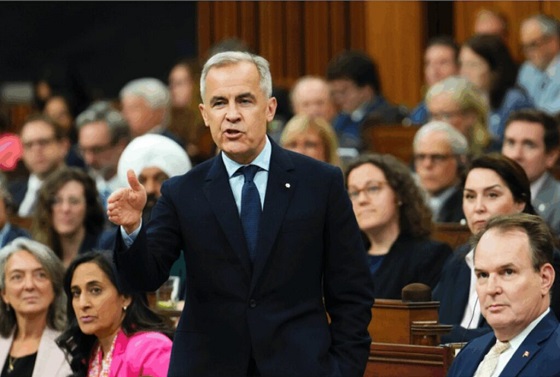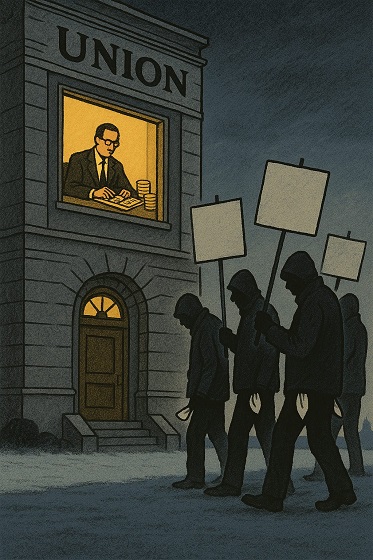Business
Pornhub hit with lawsuit over videos victimizing 12-year-old who was drugged and raped

From LifeSiteNews
There is a backlog of about five months between when a user reports a video and an authorized team leader reviews it to determine whether to remove it, allowing the video to remain available on the Pornhub site for download and redistribution for nearly a half year after the complaint was first reviewed.
A man who as a 12-year-old boy was drugged and raped in nearly two dozen videos that were uploaded to Pornhub by his victimizer for monetary gain is suing the massive online pornography leviathan for breaking child sex trafficking and RICO laws.
According to the world’s leading anti-porn activist Laila Mickelwait, “His jury trial could put Pornhub out of business.”
In recent years, scandal-plagued Pornhub — and its shadowy parent company, Mindgeek, which recently changed its name to “Aylo” to escape its “scandal-ridden smut empire” reputation — has come under fire for posting child sexual exploitation material, sexual trafficking, and assault videos and then ignoring victim’s pleas to remove the videos from their website.
The predator who admitted that in the summer of 2018 he used, induced, and enticed the young boy and another minor to engage in sexually explicit conduct for the purpose of producing video pornography is now behind bars serving a 40-year sentence for “sexual exploitation of a child, advertising child pornography, and distribution of child pornography.”
However, Mindgeek and Pornhub have yet to face their young accuser for enabling the public distribution of the videos.
According to the lawsuit, videos of the boy’s molestation “astonishingly” generated nearly 200,000 video views, and as a result of Mindgeek’s actions and/or inactions, the now-young man “has suffered incomprehensible past and present physical, emotional, and mental trauma.”
“MindGeek knows that there is a demand for CSAM (Child Sexual Abuse Material) on their sites and they cater to this demand,” according to the 78-page legal complaint filed in a U.S. District Court in Alabama where the sexual exploitation of the minors took place.
Hundreds of thousands of ‘teen’ sex video titles available
The case asserts that Mindgeek has historically sought to maximize profit, aggressively promoting child porn via titles and video descriptions that would more easily direct Google users to the exploitative videos featured on Pornhub.
“Many of the tags, categories, and search suggestions that have been created or edited by MindGeek facilitate users seeking easy access to child pornography, child sex trafficking, or any other form of child sexual abuse material, including that depicting” the then-12-year-old victim, cited in the complaint as CV1, in order to protect his identity.
“One such tag MindGeek used to classify pornographic content on its websites was ‘Teen.’ The suggested terms include ‘abused teen,’ ‘crying teen,’ ‘extra small petite teen,’ and ‘Middle School Girls,’” the legal complaint explains.
“In 2018, the word ‘teen’ was the seventh most searched term on all of Pornhub,” the complaint notes. “Other eponymous search terms, including ‘rape,’ ‘preteen,’ ‘pedophilia,’ ‘underage rape,’ and ‘extra small teens’ would call up videos depicting the same.”
The proliferation of these keywords and tags on the website ensures that when outside users Google these terms, Pornhub, or another MindGeek website, will be among the top results. This draws new users, even those searching the internet for illegal content, to MindGeek websites.
MindGeek’s aggressive data collection and traffic analytics mean that MindGeek knows exactly what users are looking for (and what exists) on their sites and that this includes sex trafficking material and CSAM.
For example, as The New York Times recently reported, as of December 4, 2020, a search for “girl under18” led to more than 100,000 videos. And a search for “14yo” led to more than 100,000 videos and “13yo” led to approximately 155,000 videos. MindGeek sought to capitalize on such traffic by allowing illegal search terms, creating suggested search terms, keywords, and tags
Purposefully failing to censor criminal child/teen porn videos
The case notes that while Mindgeek-Pornhub does have online moderators who review complaints about videos on the site, the 10 moderators “have no prior training, medical or otherwise, to identify whether someone depicted in a pornographic video is a child” and are, by design, set up to fail at their task.
The ten individuals on the “moderation/formatting team” were each tasked by MindGeek to review approximately 800-900 pornographic videos per 8-hour shift, or about 100 videos per hour. According to Pornhub, there are approximately 18,000 videos uploaded daily, with an average length of approximately 11 minutes per video. Hence, each moderator is tasked with reviewing approximately 1,100 minutes of video each hour. This is an impossible task, and MindGeek knows that.
To compensate for and accomplish the impossible task, moderators/formatters fast-forward and skip through videos, often with the sound turned down. The problem is not resources: MindGeek’s annual revenues are at least $500 million, and it could certainly hire and train more true moderators.
One of the most disturbing assertions in the case is that “When minor victims of sex trafficking and their representatives have contacted MindGeek to remove videos of them from its websites, MindGeek has refused to do so.”
In some cases, MindGeek moderators/formatters even looked at video comments, deleted those noting a video constituted child pornography or otherwise should be removed from the system, and left the video up.
The MindGeek moderators/formatters are discouraged from removing illegal content for particularly profitable users. Generally, when an uploader has a history of highly viewed content, the employees are only permitted to send warning letters about illegal or inappropriate content.
There is a backlog of about five months between when a user reports a video and an authorized team leader reviews it to determine whether to remove it, allowing the video to remain available on the Pornhub site for download and redistribution for nearly a half year after the complaint was first reviewed.
The videos that the boy’s victimizer uploaded to Pornhub bore “disturbing titles that clearly suggested the child depicted was a minor, including but not limited to: ‘(Had sex with) my Step Nephew’; ‘Taking Teen Virginity’; ‘My sweet little nephew.’ The other 20 video titles are too crude and obscene for LifeSiteNews to cite.
Despite those titles and the content of the videos, Mindgeek “never informed the authorities about the identity of the child sexual predator, the fact he posed child sexual violence, or the fact that child sexual violence was being utilized on their platforms for profit to their mutual benefit.”
At no time did the MindGeek Defendants attempt to verify CV1’s identity or age, inquire about their status as minor children, victims of sex trafficking, or otherwise use their platform to root out the trafficking of their images. Instead, the MindGeek Defendants continued to disseminate these images around the world for profit even after law enforcement informed the MindGeek Defendants the images contained child pornography.
‘Pornhub would rather stop doing business than prevent kids from watching porn’
Pornhub has now ceased operations in 12 states that have begun to require age verification in order to enter the porn sites: Texas, Utah, Arkansas, Virginia, Montana, North Carolina, Mississippi, Kentucky, Indiana, Idaho, Kansas, and Nebraska.
“The world’s biggest porn site would rather stop doing business than prevent kids from watching,” conservative commentator and author Michael Knowles noted earlier this year. “Quite telling!”
“Pornhub has decided that age verification laws damage their business model to such an extent that it is better for them to simply block entire states rather than comply with (age verification laws),” LifeSiteNews columnist Jonathon Van Maren wrote in January.
Despite the legal troubles, Pornhub racked up a total of 5.49 billion visits globally in May, and with over 1.1 billion visits in the U.S. was ranked 10th nationally for online traffic. It’s not unusual for the website to reach over 10 billion total global monthly visits.
Business
Climate Climbdown: Sacrificing the Canadian Economy for Net-Zero Goals Others Are Abandoning

By Gwyn Morgan
Canada has spent the past decade pursuing climate policies that promised environmental transformation but delivered economic decline. Ottawa’s fixation on net-zero targets – first under Justin Trudeau and now under Prime Minister Mark Carney – has meant staggering public expenditures, resource project cancellations and rising energy costs, all while failing to
reduce the country’s dependence on fossil fuels. Now, as key international actors reassess the net-zero doctrine, Canada stands increasingly alone in imposing heavy burdens for negligible gains.
The Trudeau government launched its agenda in 2015 by signing the Paris Climate Agreement aimed at limiting the forecast increase in global average temperature to 1.5°C by the end of the century. It followed the next year with the Pan-Canadian Framework on Clean Growth and Climate Change that imposed more than 50 measures on the economy, key among them a
carbon “pricing” regime – Liberal-speak for taxes on every Canadian citizen and industry. Then came the 2030 Emissions Reduction Plan, committing Canada to cut greenhouse gas emissions to 40 percent below 2005 levels by 2030, and to achieve net-zero by 2050. And then the “On-Farm Climate Action Fund,” the “Green and Inclusive Community Buildings Program” and the “Green Municipal Fund.”
It’s a staggering list of nation-impoverishing subsidies, taxes and restrictions, made worse by regulatory measures that hammered the energy industry. The Trudeau government cancelled the fully-permitted Northern Gateway pipeline, killing more than $1 billion in private investment and stranding hundreds of billions of dollars’ worth of crude oil in the ground. The
Energy East project collapsed after Ottawa declined to challenge Quebec’s political obstruction, cutting off a route that could have supplied Atlantic refineries and European markets. Natural gas developers fared no better: 11 of 12 proposed liquefied natural gas export terminals were abandoned amid federal regulatory delays and policy uncertainty. Only a single LNG project in Kitimat, B.C., survived.
None of this has had the desired effect. Between Trudeau’s election in 2015 and 2023, fossil fuels’ share of Canada’s energy supply actually increased from 75 to 77 percent. As for saving the world, or even making some contribution towards doing so, Canada contributes just 1.5 percent of global GHG emissions. If our emissions went to zero tomorrow, the emissions
growth from China and India would make that up in just a few weeks.
And this green fixation has been massively expensive. Two newly released studies by the Fraser Institute found that Ottawa and the four biggest provinces have either spent or foregone a mind-numbing $158 billion to create just 68,000 “clean” jobs – an eye-watering cost of over $2.3 million per job “created”. At that, the green economy’s share of GDP crept up only 0.3
percentage points.
The rest of the world is waking up to this folly. A decade after the Paris Agreement, over 81 percent of the world’s energy still comes from fossil fuels. Environmental statistician and author Bjorn Lomborg points out that achieving global net-zero by 2050 would require removing the equivalent of the combined emissions of China and the United States in each of the next five
years. “This puts us in the realm of science fiction,” he wrote recently.
In July, the U.S. Department of Energy released a major assessment assembled by a team of highly credible climate scientists which asserted that “CO 2 -induced warming appears to be less damaging economically than commonly believed,” and that aggressive mitigation policies might be “more detrimental than beneficial.” The report found no evidence of rising frequency or severity of hurricanes, floods, droughts or tornadoes in U.S. historical data, while noting that U.S. emissions reductions would have “undetectably small impacts” on global temperatures in any case.
U.S. Energy Secretary Chris Wright welcomed the findings, noting that improving living standards depends on reliable, affordable energy. The same day, the Environmental Protection Agency proposed rescinding the 2009 “endangerment finding” that had designated CO₂ and other GHGs as “pollutants.” It had led to sweeping restrictions on oil and gas development and fuelled policies that the current administration estimates cost the U.S. economy at least US$1 trillion in lost growth.
Even long-time climate alarmists are backtracking. Ted Nordhaus, a prominent American critic, recently acknowledged that the dire global warming scenarios used by the Intergovernmental Panel on Climate Change rely on implausible combinations of rapid population growth, strong economic expansion and stagnant technology. Economic growth typically reduces population increases and accelerates technological improvement, he pointed out, meaning emissions trends will likely be lower than predicted. Even Bill Gates has tempered his outlook, writing that climate change will not be “cataclysmic,” and that although it will hurt the poor, “it will not be the only or even the biggest threat to their lives and welfare.” Poverty and disease pose far greater threats and resources, he wrote, should be focused where they can do the most good now.
Yet Ottawa remains unmoved. Prime Minister Carney’s latest budget raises industrial carbon taxes to as much as $170 per tonne by 2030, increasing the competitive disadvantage of Canadian industries in a time of weak productivity and declining investment. These taxes will not measurably alter global emissions, but they will deepen Canada’s economic malaise and
push production – and emissions – toward jurisdictions with more lax standards. As others retreat from net-zero delusions, Canada moves further offside global energy policy trends – extending our country’s sad decline.
The original, full-length version of this article was recently published in C2C Journal.
Gwyn Morgan is a retired business leader who has been a director of five global corporations.
Business
The UN Pushing Carbon Taxes, Punishing Prosperity, And Promoting Poverty


From the Daily Caller News Foundation
Unelected regulators and bureaucrats from the United Nations have pushed for crushing the global economy in the name of saving the planet.
In October, the International Maritime Organization (IMO), a specialized agency within the U.N., proposed a carbon tax in order to slash the emissions of shipping vessels. This comes after the IMO’s April 2025 decision to adopt net-zero standards for global shipping.
Had the IMO agreed to the regulation, it would have been the first global tax on greenhouse gas emissions. Thankfully, the United States was able to effectively shut down those proposals; however, while these regulations have been temporarily halted, the erroneous ideas behind them continue to grow in support.
Proponents of carbon taxes generally argue that since climate change is an existential threat to human existence, drastic measures must be taken in all aspects of our lives to address the projected costs. People should eat less meat and use public transportation more often. In the political arena, they should vote out so-called “climate deniers.” In the economic sphere, carbon taxes are offered as a technocratic quick fix to carbon emissions. Is any of this worth it? Or are the benefits greater than the costs? In the case of climate change, the answer is no.
Carbon taxes are not a matter of scientific fact. As with all models, the assumptions drive the analysis. In the case of carbon taxes, the time horizon selected plays a major role in the outcome. So, too, does the discount rate and the specific integrated assessment models.
In other words, “Two economists can give vastly different estimates of the social cost of carbon, even if they agree on the objective facts underlying the analysis.” If the assumptions are subjective, as they are in carbon taxes, then they are not scientific facts. As I’ve pointed out, “carbon pricing models are as much political constructs as they are economic tools.” One must also ask whether carbon taxes will remain unchanged or gradually increase over time to advance other political agendas. In this proposal, the answer is that it increases over time.
Additionally, since these models are driven by assumptions, one would be right in asking who gets to impose these taxes? Of course, those would be the unelected bureaucrats at the IMO. No American who would be subject to these taxes ever voted for the people attempting to create the “world’s first global carbon tax.” It brings to mind the phrase “no taxation without representation.”
In an ironic twist, imposing carbon taxes on global shipping might actually be one of the worst ways to slash emissions, given the enormous gains from trade. Simply put, trade makes the world grow rich. Not just wealthy nations like those in the West, but every nation, even the most poor, grows richer. In wealthy countries, trade can help address climate change by enabling adaptation and innovation. For poorer countries, material gains from trade can help prevent their populations from starving and also help them advance along the environmental Kuznets curve.
In other words, the advantages of trade can, over time, make a country go from being so poor that a high level of air pollution is necessary for its survival to being rich enough to afford reducing or eliminating pollution. Carbon taxes, if sufficiently high, can prevent or significantly delay these processes, thereby undermining their supposed purpose. Not to mention, as of today, maritime shipping accounts for only about 3% of total global emissions.
The same ingenuity that brought us modern shipping will continue to power the global economy and fund growth and innovation, if we let it. The world does not need a layer of global bureaucracy for the sake of virtue signaling. What it needs is an understanding of both economics and human progress.
History shows that prosperity, innovation, and free trade are what make societies cleaner, healthier, and richer. Our choice is not between saving the planet and saving the economy; it is between free societies and free markets or surrendering responsibility to unelected international regulators and busybodies. The former has lifted billions out of poverty, and the latter threatens to drag us all backwards.
Samuel Peterson is a Research Fellow at the Institute for Energy Research.
-

 Alberta1 day ago
Alberta1 day agoCalgary mayor should retain ‘blanket rezoning’ for sake of Calgarian families
-

 Bruce Dowbiggin1 day ago
Bruce Dowbiggin1 day agoSports 50/50 Draws: Make Sure You Read The Small Print
-

 espionage1 day ago
espionage1 day agoTrump says release the Epstein files
-

 Alberta1 day ago
Alberta1 day agoAlberta Offers Enormous Advantages for AI Data Centres
-

 COVID-191 day ago
COVID-191 day agoNew report warns Ottawa’s ‘nudge’ unit erodes democracy and public trust
-

 Censorship Industrial Complex1 day ago
Censorship Industrial Complex1 day agoQuebec City faces lawsuit after cancelling Christian event over “controversial” artist
-

 Alberta1 day ago
Alberta1 day agoNational Crisis Approaching Due To The Carney Government’s Centrally Planned Green Economy
-

 Daily Caller16 hours ago
Daily Caller16 hours ago‘Holy Sh*t!’: Podcaster Aghast As Charlie Kirk’s Security Leader Reads Texts He Allegedly Sent University Police









